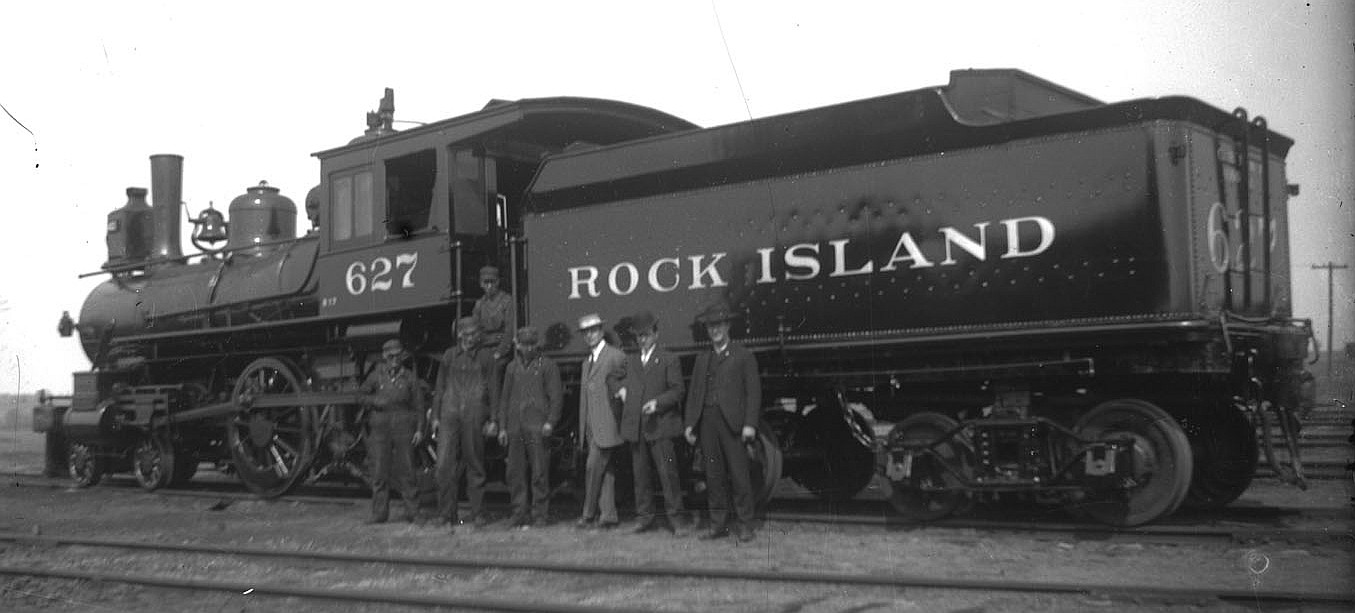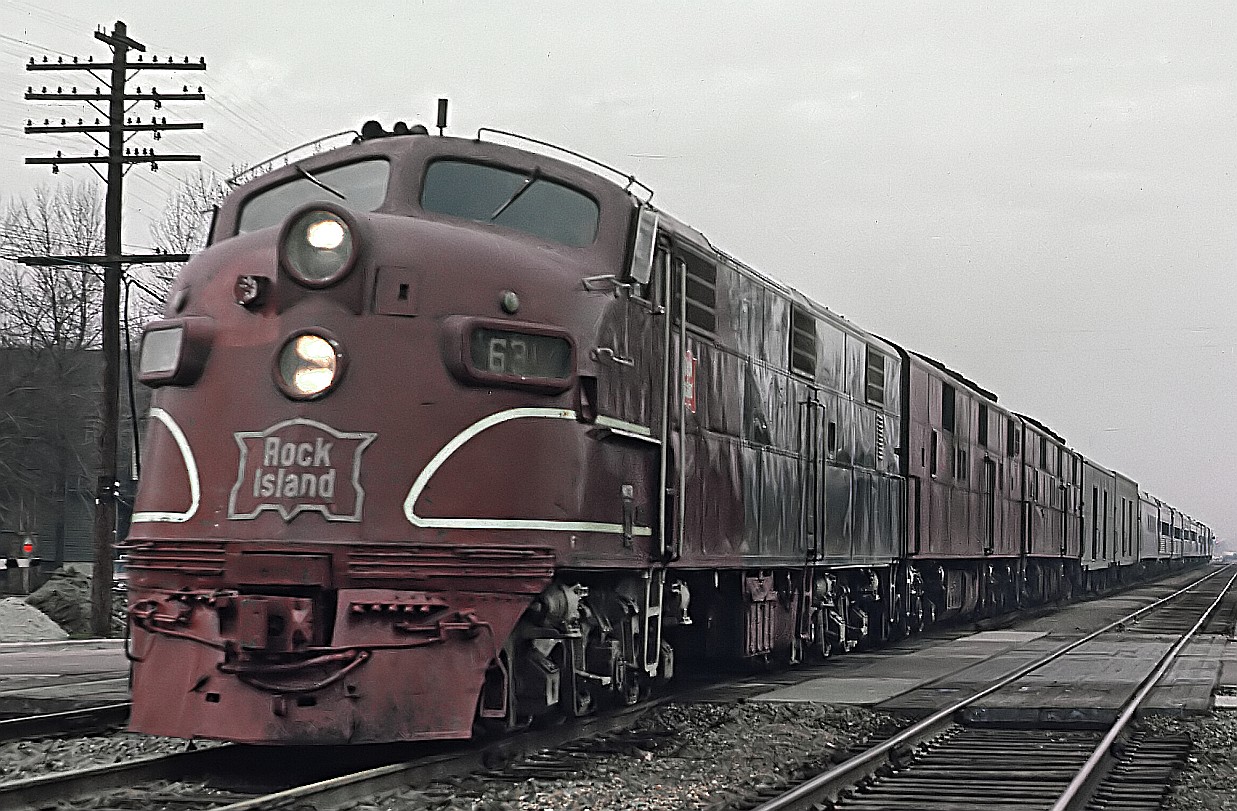JeffPo's Rock Island Lantern Page
Created: 02/08/18
Last update: 02/13/18
This Adlake lantern was used by the Rock Island Railroad. The top of the lid is embossed with Rock Island letters within the symbol the railroad used. The symbol was called the "beaver pelt" logo, which originated around 1900. The 1900 to 1905 version said Rock Island System. From about 1905 until 1976 they used the one you see on the top of this lantern that said Rock Island.
The blue globe doesn't have any markings other than a small K which stands for Kopp, the manufacturer. I find the glow of a blue globe to be mesmerizing. Other than Christmas tree lights, the first encounter with a blue light was the taxi way lights of an airport. I grew up near an airport and use to love seeing those lines of blue lights at night. In the railroad industry, a blue signal was used on equipment that wasn't suppose to be moved. It could be thought of as a cautionary "men at work" sign.
Rock Island Railroad

Circa 1880
The Chicago, Rock Island and Pacific Railroad, known as the Rock Island Line, was a Class 1 railroad. The predecessor, Rock Island and La Salle Railroad Company, was formed in February of 1847. In 1854 it because the first railroad to connect Chicago and the Mississippi River. An interesting fact is that Abraham Lincoln represented The Rock Island railroad in 1857 in a lawsuit regarding bridges over navigable rivers. The Rock Island stretched across many states: Arkansas, Colorado, Illinois, Iowa, Kansas, Minnesota, Missouri, Nebraska, New Mexico, Oklahoma, South Dakota and Texas.

Circa 1965
It operated an extensive passenger service that reach even further. In the 1940s
it competed with the Santa Fe offering service to California. The Rock
Island did not join Amtrak in 1971 and operated on its own until the
final runs of 1978.
The Rock Island also had a large commuter train service in Chicago. From
the 1920s onward, they used specially designed coaches that were known as the
“Capone” cars. While they had a very successful run for many years, over time,
deferred maintenance took its toll on both track and rolling stock. The railroad
could not afford replace equipment. Hauling both freight and passenger, the
railroad operated at a loss in the final years. The railroad was shut down and
liquidated in 1980.